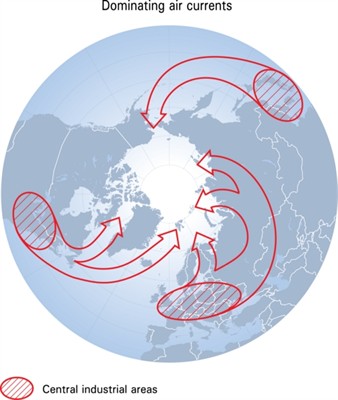How are pollutants transported to the Arctic?
1 Answer
Ocean currents and atmospheric patterns are responsible for transporting more contaminants than most would predict to the Arctic.
Explanation:
Ocean currents and atmospheric patterns are responsible for transporting more contaminants than most would predict to the Arctic given the low population density of this region. While some pollutants are from nearby sources, others travel long distances from ocean currents, rivers, and due to atmospheric patterns.

Many pollutants biomagnify (increases in concentration up the food web), thus higher level consumers are at risk, including humans. Polar bears have high levels of persistent organic pollutants (POPs) in their blood, especially nursing cubs (source). Humans living in the Arctic region have high levels of POPs as well as high levels of mercury and cadmium (source ).
A more interesting transport method of pollutants to the Arctic is migratory birds, which carry pollutants with them from other places and leave these toxins behind in their guano (source ).
The actual effects of these pollutants on Arctic animals are comparable to the effects on animals elsewhere. For example, mercury is a neurotoxin and this remains true whether an animal is in the Arctic or not.
You can read more about this issue here and a review of historical trends of contaminant levels in Arctic wildlife can be found here.

